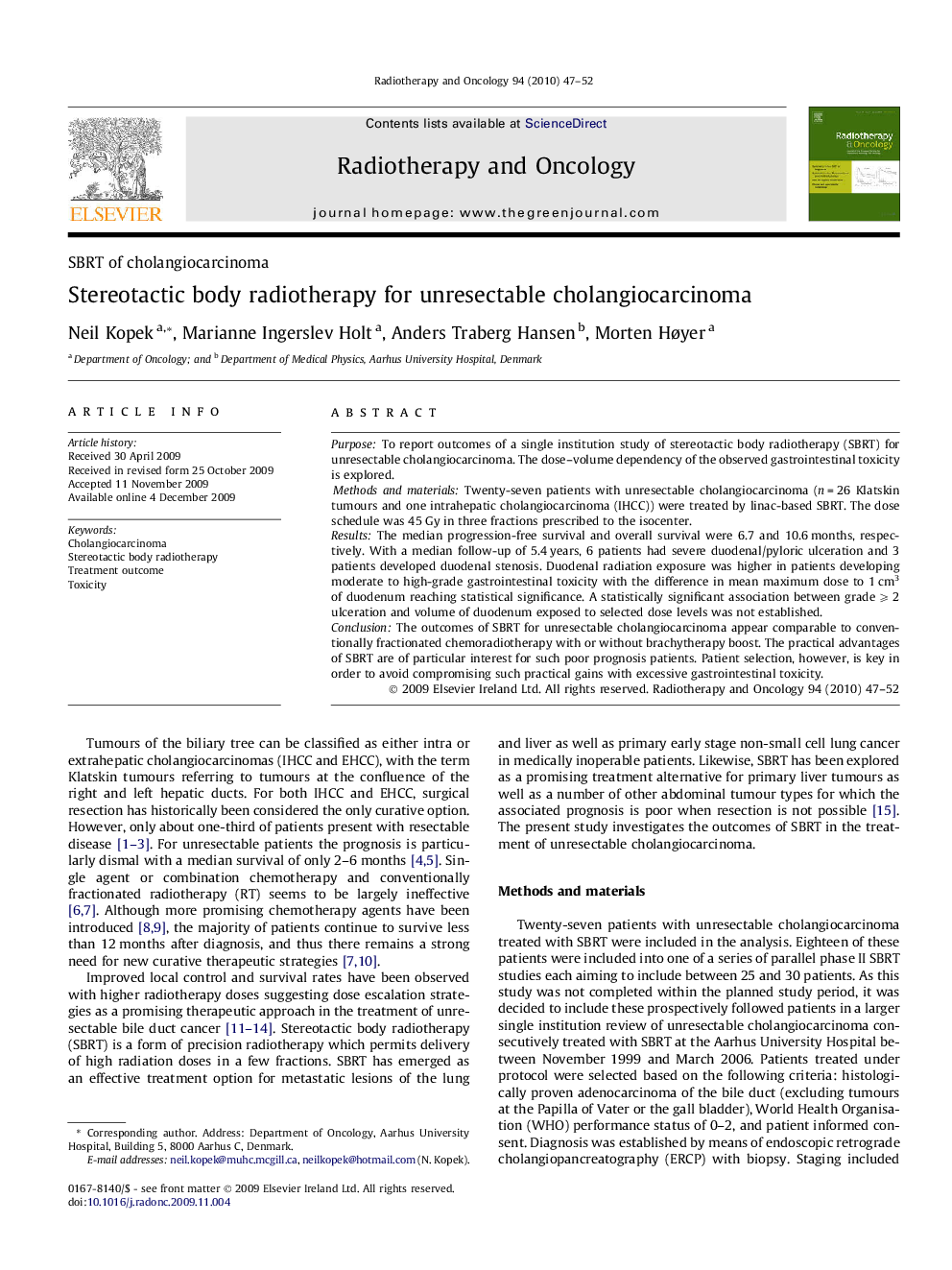| Article ID | Journal | Published Year | Pages | File Type |
|---|---|---|---|---|
| 2159525 | Radiotherapy and Oncology | 2010 | 6 Pages |
PurposeTo report outcomes of a single institution study of stereotactic body radiotherapy (SBRT) for unresectable cholangiocarcinoma. The dose–volume dependency of the observed gastrointestinal toxicity is explored.Methods and materialsTwenty-seven patients with unresectable cholangiocarcinoma (n = 26 Klatskin tumours and one intrahepatic cholangiocarcinoma (IHCC)) were treated by linac-based SBRT. The dose schedule was 45 Gy in three fractions prescribed to the isocenter.ResultsThe median progression-free survival and overall survival were 6.7 and 10.6 months, respectively. With a median follow-up of 5.4 years, 6 patients had severe duodenal/pyloric ulceration and 3 patients developed duodenal stenosis. Duodenal radiation exposure was higher in patients developing moderate to high-grade gastrointestinal toxicity with the difference in mean maximum dose to 1 cm3 of duodenum reaching statistical significance. A statistically significant association between grade ⩾ 2 ulceration and volume of duodenum exposed to selected dose levels was not established.ConclusionThe outcomes of SBRT for unresectable cholangiocarcinoma appear comparable to conventionally fractionated chemoradiotherapy with or without brachytherapy boost. The practical advantages of SBRT are of particular interest for such poor prognosis patients. Patient selection, however, is key in order to avoid compromising such practical gains with excessive gastrointestinal toxicity.
